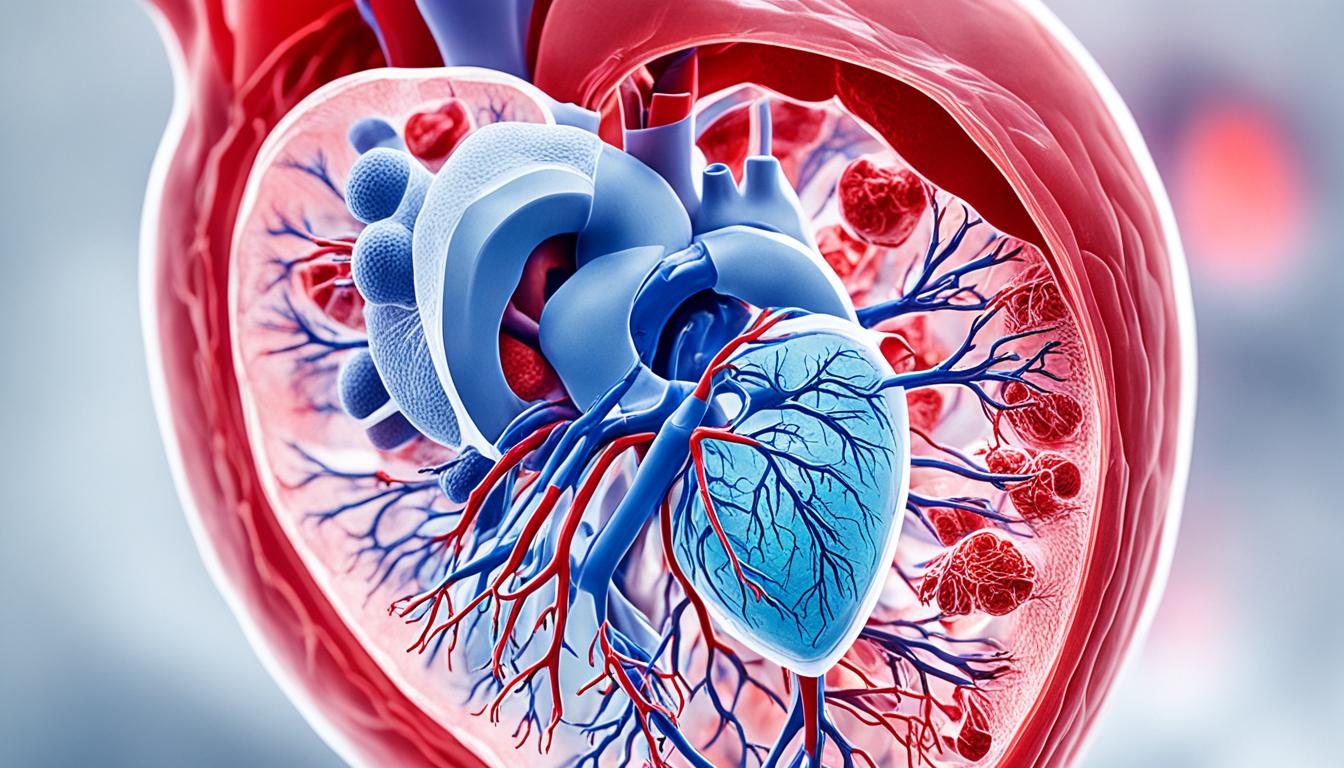An atrial septal defect (ASD) is a heart problem from birth. It causes a hole between the heart’s upper chambers. Because of this hole, too much blood can flow to the lungs.
ASDs can be different types, like secundum and primum. Some might not show any symptoms or need treatment. But if the hole is big, it can hurt the heart and lungs. This could lead to signs like feeling tired, not being able to breathe well, heartbeats that aren’t normal, or ones that ‘skip.’
The exact reason ASDs happen isn’t clear, but things like genes or certain health issues might be involved. Even smoking and drinking a lot could have a small part. If a person needs treatment for an ASD, surgery is often the answer. Fixing the hole can prevent further health problems.
Key Takeaways:
- Atrial septal defect (ASD) causes a hole in the heart’s upper chambers.
- This can lead to increased blood flow to the lungs and symptoms such as shortness of breath.
- If the ASD is small, it may not need treatment, but a large hole can harm the heart and lungs.
- The exact cause of ASDs is not known, but genetics and certain health issues may be linked.
- The main treatment for ASDs is surgery to close the hole and avoid complications.
Diagnosis and Treatment of Atrial Septal Defect
Finding an atrial septal defect (ASD) involves several tests. These tests check the size, place, and how well the heart works. Tests like an echocardiogram, chest X-ray, ECG, and MRI are used.
- Echocardiogram
- Chest X-ray
- Electrocardiogram (ECG)
- Magnetic resonance imaging (MRI)
Healthcare experts use these tools to plan the right treatment. Usually, an echocardiogram is enough to find ASDs. But sometimes, more tests are needed to fully understand the situation.
Treating ASDs depends on the defect’s size and if there are problems. Small ASDs might just need check-ups with a heart doctor. But bigger ones that harm the heart or lungs might need fixing.
There are two main ways to treat ASDs:
- Percutaneous Transcatheter Approach: This method is less invasive. Doctors use a tube to place a special device at the defect site in the heart. It’s known as device closure and is often better than open-heart surgery.
- Open-Heart Surgery: Sometimes, surgery is needed. A surgeon will make a cut on the chest, work on the heart, and fix the defect using stitches or patches.
After the treatment, people will have to see their doctors often. This is to check if the treatment worked well.
Stem Cell Therapy and Tissue Engineering for Atrial Septal Defect
In the world of treating heart defects, new methods stand out. Stem cell therapy and tissue engineering are making waves. Traditionally, stem cell treatment focused on heart diseases. But now, it’s turning heads for fixing birth defects like atrial septal defects (ASDs).
The idea is to use special stem cells, like cardiac and vascular ones, to fix heart issues. A cool method involves creating living tissue that’s ready to help the heart. This tissue mixes stem cells with special structures. It helps the heart grow and develop in the right way, reducing the need for more surgeries.
This field is on fire with possibilities, especially for conditions like atrial septal defects (ASDs). But, we still need more tests to check if it’s safe and really works. These tests will show us the full potential of stem cells and tissues in making hearts better. So, while we’re excited about what’s to come, we know there’s still a lot of work and study ahead.

